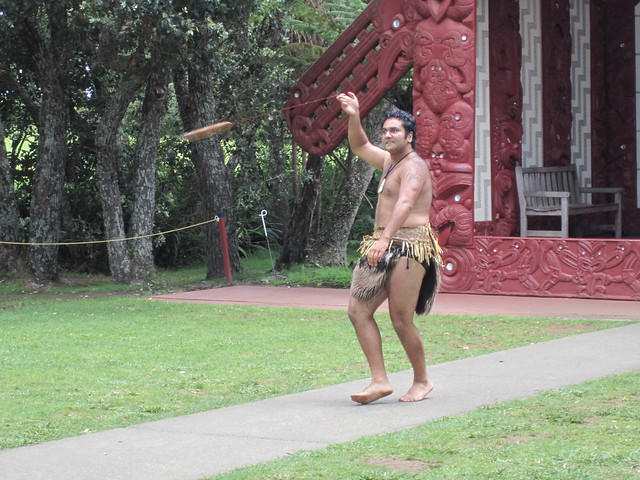Hi everyone. It's become the time in my PhD where I really cannot afford to provide you with the long posts of the past. I noticed there was a lot of repetition between the blog text and the photo captions and so I am going to try and minimise redundancy by giving a brief overview of where I went, what I did, and how I got there with more detail of what I saw and learned in the Flikr photo captions. I don't really know how many people read this thing through and through, so I hope you can appreciate my changes.
So, back to my trip to New Zealand waaayy back in January...
...I left off at the end of a harrowing day of near-death experiences and kiwi encounters and by the next morning, I felt I was due some rest and relaxation. I drove in to the town of Keri Keri for some breakfast at the little Cafe Zest which had some of the best blueberry muffins I've had in a very long time and then on to Paihia, the entrance to New Zealand's famed Bay of Islands. The Bay of Islands was my main destination, ever since seeing ads for it in my local rail station in Sydney. I'd read that it is useless to visit the Bay of Islands if you don't actually go on the water, so I found myself a YHA hostel on a houseboat called, Rock the Boat, but more on that in the next post. Rock didn't leave until 5pm later that day so I had all morning and afternoon to myself.
 |
| Waitangi Flagpole at the site where the Treaty of Waitangi was signed between the British and the Maori peoples in 1840. |
When I drove up I was greeted at the entrance by some young men and women dressed in traditional Maori clothes inviting me in. It made me very skeptical at how kitchy this site was going to be - I though cheesy reenactments and a badly presented tour were in store, especially at the price of $45 to gain entrance to the Treaty Grounds, a tour, and a ticket to a cultural performance. I thought to myself, I'm only here once so I'd better see what it's about, and in the end I could not have been proven more wrong or found a better way to spend $45 in a day!
I had about half an hour to explore the Treaty Grounds on my own but then I made my way over to the Meeting House where we were greeted by the young woman who was out front. She had a very cheery demeanor as she explained the significance of the cultural performance we were about to witness. We were told that we, as visitors, were a tribe and she selected a tribal leader for us. We were then going to be tested as a tribe by the hosting tribe (the performers) to determine whether we came in peace or in war. And then the show started with the hosting tribal leader stepping out in front of us swinging a piece of wood on a string around him, making whooshing noises in the air, snarling with his tongue stuck out and his eyes bulged so you could see as much white of them as was possible. He was shortly joined by two other men in their intimidation dance and a small group of women came out on the veranda and started to chant. Finally, the host tribal chief laid down a leaf (or feather or flower?) on the ground and our chief picked it up. We were seen as friends and welcomed into the Meeting House.
After the show, the performers greeted us outside in the courtyard and those of us who have no shame were allowed to hold some of the Maori weapons for a photo op, giving our try at intimidation... Let's just say I didn't quite play the part as well as the performers!
I then joined up with a tour group and we walked the grounds, led by a colourful storyteller of a tour guide to the different sites, including the large, 117-foot long waka (canoe), traditionally carved in one piece from the felled trunk of a totara tree in a sacred ceremony in celebration of the 100th anniversary of the signing of the Treaty of Waitangi in 1940. The 3-meter wide stump of the tree used for its construction is housed at the end of the waka's canopy and is just massive! The waka itself was built as a war canoe that could carry 135 people! It actually floats and is taken out onto the bay from time to time for special celebrations.
If you ever find yourself in the Bay of Islands area, do not miss this site!!!! It is well worth the $45 and well worth an afternoon of your time!

